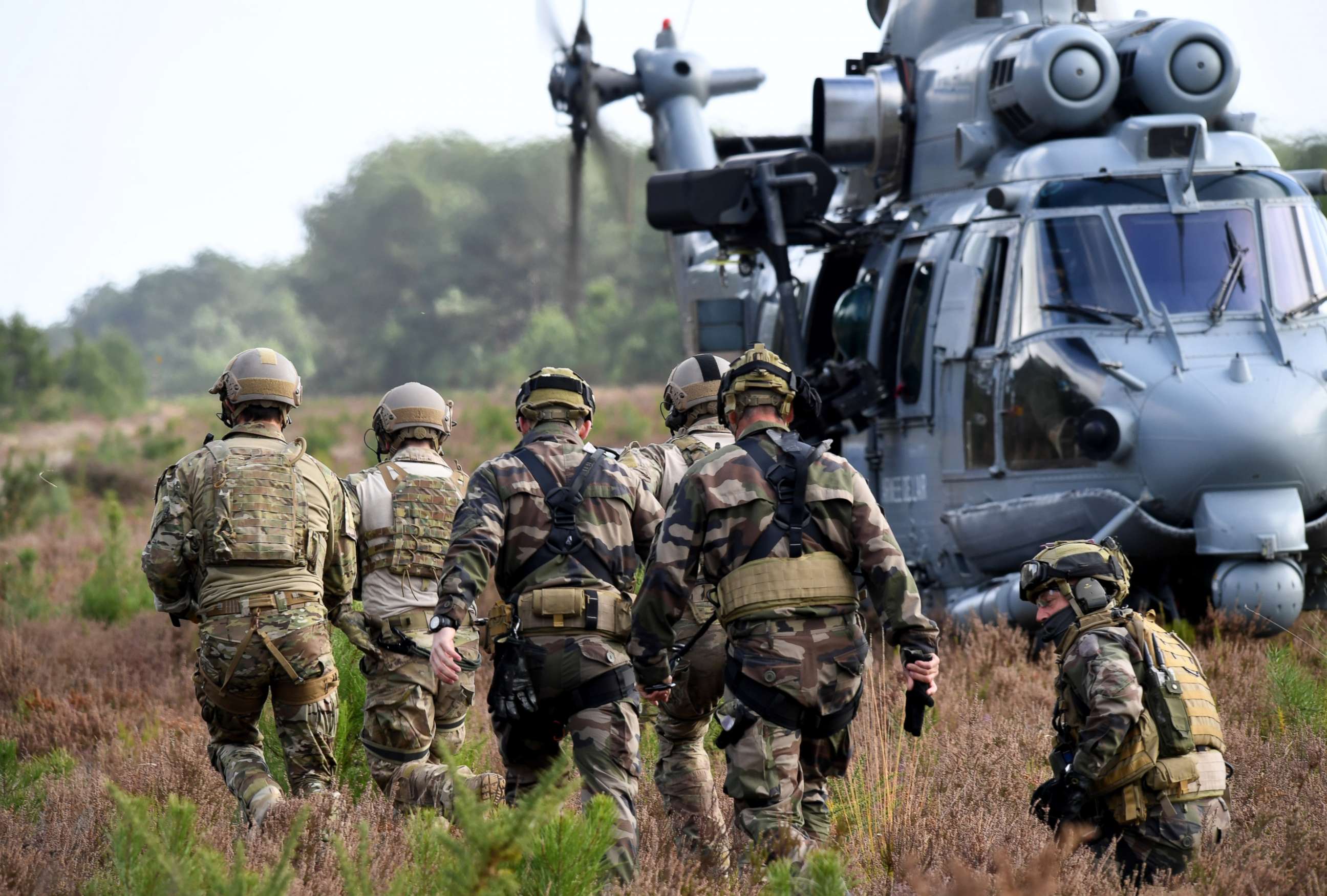What we know - and don't know - about the transgender military ban
Trump's tweets are prompting many questions.
— -- The trio of tweets posted by President Donald Trump announcing a ban on transgender individuals serving in the military has prompted many questions, not all of which have clear answers.
Officials from a number of government departments are grappling with the prospect of a massive policy shift, not to mention the many active service members who are transgender and were left wondering if they are out of a job.
Military policy changes are within Trump’s purview as commander-in-chief, though presidents typically consult with or are advised by military leaders when it comes to the logistics of the implementation of said policies.
Here is a rundown of the information available so far.
How will this be implemented?
Incoming White House press secretary Sarah Sanders fielded the first questions about how the proposed ban will take effect during the briefing Wednesday but did not give much clarity to the issue.
“The implementation policy is going to be something that the White House and the Department of Defense have to work together to lawfully determine and, you know, I would imagine the Department of Defense will be the lead on that and keep you posted as that takes place,” she said.
Gen. Joseph Dunford, the chairman of the Joint Chiefs of Staff, issued guidance this morning that indicated that everything is to remain as normal until told otherwise.
“There will be no modifications to the current policy until the president’s direction has been received by the secretary of defense and the secretary has issued implementation guidance,” Dunford’s statement said.
Chief Pentagon spokesperson Dana W. White reiterated that they too are waiting for guidance.
"The Department of Defense is awaiting formal guidance from the White House as a follow-up to the commander-in-chief's announcement on military service by transgender personnel," White said in a statement released Thursday.
When will this be implemented?
That remains unclear. Dunford’s guidance gave no suggestion on timing, and at Wednesday’s briefing, Sanders said that it will come from a group effort across departments but gave no timing suggestions.
What happens to active transgender service members right now?
Dunford’s guidance, which was released publicly, suggested that nothing should change and they should continue to serve as they are now until new instructions are given.
“In the meantime, we will continue to treat all of our personnel with respect. As importantly, given the current fight and the challenges we face, we will all remain focused on accomplishing our assigned missions,” the guidance stated.
Sanders did not give a clear answer on Wednesday about what it means for active service members.
“That's something that the Department of Defense and the White House will have to work together as implementation takes place and is done so lawfully,” she said.
If asked to leave active service, what kind of discharge will the currently serving transgender individuals receive?
That remains unknown.
How many transgender service members are actively serving?
The military does not track the number of transgender military service members through its personnel records, but the armed services have information about service members who have contacted military medical services about a possible transgender transition.
A 2016 Rand study commissioned by the Department of Defense estimates that between 1,320 and 6,630 of the 1.3 million active service members might be transgender.
How many seek gender transition-related treatment?
The Rand study said that "only a subset" of those individuals will pursue gender transition-related treatments. The study cited health insurance claim data that suggests that between 29 and 129 active service members "seek transition-related care that could disrupt their ability to deploy."
About 160 sailors and fewer than five Marines are undergoing some form of transgender transition through the Navy's medical services, according to a Defense Department official. About 80 Army personnel are in similar transitions. The Air Force does not provide details about how many of its members may be in transition.
What happens to transgender veterans – does their health care and coverage as a vet continue?
This has not been addressed publicly by the White House or Department of Defense.
David Shulkin, the secretary of veteran's affairs, told 77 WABC Radio that he "was not aware of the decision that was going to be announced."
He did not speak about the specifics of what the ban would mean for veterans.
"Certainly when you personalize care there are added costs," he told the station.
"Transgender veterans do require staff that are trained to be able to deal with their situation appropriately, so that they can get the care that they want with the dignity and the outcomes that they deserve," Shulkin said.
Who was consulted on this decision? Which generals?
Sanders did not name names on Wednesday but said “the president's national security team was part of this consultation.”
“When the president made the decision yesterday, the Secretary of Defense was immediately informed, as were the rest of the national security team that had been part of this ongoing conversation,” she said.
Some senior defense officials were caught off guard by President Trump’s announcement. General Mark Milley, the Army Chief of Staff, said Thursday that he had not known beforehand of the announcement.
"I personally did not, but nor would I have expected to," Milley said.

What prompted this?
It was only last year that the Obama administration prompted a review of the military's handling of transgender service members. Prior to that transgender service members were banned from serving openly.
On June 30, 2016, then-Secretary of Defense Ash Carter announced the change, meaning that from then on the military no longer considered "gender dysphoria" a medical condition that precluded individuals from serving.
Under the Trump administration, Defense Secretary James Mattis issued a memo on June 30, 2017, wherein he gave Undersecretary of Defense for Personnel and Readiness Anthony Kurta until September 2017 to report the results of a review about transgender accession. Trump has not indicated he has that review in hand.
Both Mattis and Kurta were on vacation when Trump tweeted about the ban Wednesday, making the timing of his announcement more unexpected.
What exactly are the “tremendous medical costs” that Trump cited?
Extending existing health care coverage for active service members so that it covers transition-related services would increase the military’s budget by between $2.4 million and $8.4 million annually, the Rand study concluded.
Such an increase is the equivalent of 0.04- to 0.13-percent increase to the military budget.
Who supports this decision publicly, and who is against it?
Among Democrats, there was universal dismissal of the president’s tweets. Republican reaction was fairly mixed, however, with some taking issue with the manner in which the major policy change was announced, Sen. John McCain, R-Ariz., standing by “any American who wants to serve our country,” and others applauding the president’s concerns over “readiness and cost.”
Read an extensive list of reactions here.
Will we still partner with other armies that include transgender service members?
This remains unknown.
ABC News' Justin Fishel, Luis Martinez and Elizabeth McLaughlin contributed to this report.




